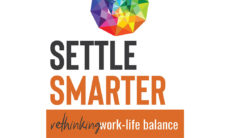The following is an exclusive sneak preview excerpt from the forthcoming book, Engaging Employees Through Strategic Communication, co-authored by Consultants Collective member consultant Mark Dollins and John Stemmle, Chair & Professor of the Department of Strategic Communication at the University of Missouri School of Journalism. We’ll be featuring Mark Dollins and John Stemmle in a Consultants Collective Conversations online event on September 22nd at 9am PT / noon ET. Register here.
It’s no secret that technology is the ultimate modern-day disrupter in just about any industry, but for employee communicators, the implications of new technologies—both communication-focused and not—are arguably even more significant. We must learn to use them efficiently with the practice of communicating and/or understand how their introduction into the work environment will shape the strategies and tools we use.
Cloud computing has been the single biggest enabler for organizations to adopt new communication technologies. With on-demand availability of computer system resources, especially data storage and computing power typically requiring no direct active management by the user, the Cloud has become a game changer. As organizations grow in confidence with the security of cloud-enabled technologies, one of the biggest previous hurdles for employee communicators to clear—the security firewall—is significantly smaller.
These technologies have direct implications for not only how employee communicators will reach their stakeholders, but also how they will reshape the organizations themselves. Those that, for example, result in fewer total employees, more employees working more remotely or lead to more contract, or “Gig,” employees, will have profound implications on everything from the channels we choose, to the content we select and the emphasis we place on issues such as culture and values.
New communication technologies that focus on content distribution versus more traditional content creation on the part of employee communicators will drive new definitions for our roles. With the growing, and continued evolution of employee-generated content, communicators’ roles inside organizations may well become closer to an orchestrator than a craftsperson of content. From self-made training videos to employee-generated documents on best practices, smartphones have equipped employees with new tools that place unprecedented power to communicate in their hands.
As the technologies take greater hold, they will prompt a continuous evolution versus more dramatic change for employee communication. Running parallel to digital transformation efforts across enterprises, the common denominator is that data increasingly are being put in the hands of all employees simultaneously; it’s being done in ways that are easier and more intuitive for them to use. While this represents a big culture change for many organizations as they empower employees to make better decisions based on good data, it also demands increasing trust on the part of the enterprise and deeper analytical skills on the part of employees.
More broadly in the world of technology, there are two forces that are shaping, and will continue to shape, the workforce: artificial intelligence and blockchain.
We’ll start with artificial intelligence (AI), which has been around as a concept for decades. Given that history, it’s not surprising that the definition of what AI is varies by discipline. For example, as encapsulated in the Journal of Advertising’s 2021 themed issue on AI, in the world of marketing, AI refers to the “broad idea that computers, through the use of software and algorithms, can think and perform tasks like humans.” This definition differs a bit from the definition from the world of business and management that paints AI as “the theory and development of computer systems able to perform tasks normally requiring human intelligence, such as visual perception, speech recognition, decision-making, and translation between languages.”
In advertising, AI was defined as “a set of disruptive technologies which simulate human intelligence and realize machine intelligence.” Finally, in the communication discipline, artificial intelligence-mediated communication (AI- MC) was defined as interpersonal communication in which an intelligent agent operates on behalf of a communicator by modifying, augmenting, or generating messages to accomplish communication goals.
The commonality among all of these definitions, as explained by Dr. Shelly Rodgers in the Journal of Advertising, is that AI is data driven for the purpose of making intelligent decisions. For our purposes in employee communication, it’s about technology learning as it operates, getting smarter along the way and solving problems or needs in the process. Imagine feeding financial results from a quarterly earnings spreadsheet into an AI-enabled tool and having it write its own, new quarterly earnings news release.
While it may take a while for AI to replace the nuanced work of storytelling away from the communicator, it most certainly will play a more immediate role in giving communicators a bit of a head start in redefining how they prepare earnings releases. That, in turn, will free communicators to spend their energies on more strategic endeavors, like that nuanced storytelling.
AI already is running in full gear with functions such as HR and recruiting. It’s already being used to review resumes, evaluate video interviews and even score potential inside candidates for a promotion, assessing who is most likely to succeed in a new position.
For the employee communication professional, the opportunities to make better decisions with AI are seemingly limitless. From which headline on an intranet story is more likely to attract readership to which photo is more likely to be liked or shared, AI will have a profound influence on content that communicators will use, where to use it and when to publish it. Pulling data from intranet sites, click-throughs on email newsletters and other technologies, it will inform communicators in ways that have never before been possible. It will deliver predictive analytics.
Technologies specifically for the communicator are rapidly evolving, too. Gone are the days when interviewing a CEO or subject matter expert and waiting for a transcript took days. Tools like Otter transcribe voice to text immediately, enabling immediate choices for writing, editing and production. Video editing, using tools like Descript, can be done in a fraction of the time of previous editing, simply by editing a transcript; the tool automatically deletes or inserts recorded content based on edits made to the transcript.
Virtual reality (VR) and augmented reality (AR) also are rapidly emerging forces. While early applications of this technology have been synonymous with gaming, the technology also lends itself to business environments, enabling collaboration and ideation. Spatial, for example, lets colleagues create virtual work rooms with 3-D images of themselves to share digital assets from the internet, their PCs and smartphones, among other sources.
“It’s like taking Zoom and making it feel more like you’re in a room with your colleagues,” said Shel Holtz, director of Internal Communication at Webcor, a San Francisco-based commercial contractor. Responsible for employee and executive communication, as well as social media, he has spent more than 40 years in corporate roles and consulting on communications and technology. “From new hire orientations to virtual tools to training, virtual and augmented reality technologies are very much a future game changer for employee communication,” he said.
The second significant technology that will continue to influence employee communication is blockchain. In the article “Blockchain and Communication,” Peter A. Chow-White and his co-authors define blockchain as “an emerging technology that . . . is a protocol for a decentralized, digital ledger that facili- tates peer-to-peer value transfers of all sorts.” Although blockchain technology is relatively new, emerging in 2009 with the introduction of Bitcoin, it has moved beyond just digital currency to “smart contracts and social applications” that don’t require other entities such as governments, banks or lawyers.
Using blockchain technology, virtually anything can be tracked and traded on a network, reducing risks and cutting costs.
Businesses increasingly are recognizing that the faster information is received and the more accurate it is, the better it is for performance. Blockchain’s ability to deliver immediate, shared and transparent information stored on an immutable ledger, one that can be accessed only by permissioned network members, is a game changer in the business world. From tracking orders and payments to servicing accounts and monitoring production, members share a single view and all details of all transactions end to end. They’re more efficient, too, as transactions are recorded only once, eliminating the duplication of effort that’s common in many traditional business networks.
To speed transactions, a set of rules—called a smart contract—is stored on the blockchain and executed automatically. A smart contract can define conditions for corporate bond transfers, include terms for travel insurance to be paid and digitize many more common processes.
For the employee communicator, blockchain is a disruptor. As more block- chain technologies are executed, work will be outsourced and transaction-based processes will become far more automated. As those technologies increase, the number of employees is expected to decrease. Blockchains build trust into the processes they enable through added transparency and commonly applied rules. “Why have an in-house product design team when I can enter into a smart con- tract through blockchain and hire gig workers, agencies and/or independent contractors?” said Holtz. “In fact, gig work could become a big part of companies, replacing in-house teams.”
With all this expected change, the definition of what an “employee” is will most assuredly change. The implications of having fewer employees, more gig and contract workers, and more smart contracts means everything from values to culture to ethics and compliance will need renewed focus, and more strategic communication solutions for workers of all identities.
When it comes to technologies that support enterprise-wide employee communication, the number of choices increases substantially year upon year. Each has a set of unique value propositions that cover a range of costs and capabilities. Just as there is no “one-size-fits-all” employee communication strategy that fits complex organizational needs, the technology fit for each organization requires significant exploration and partnership with IT professionals.
While most employee communication applications highlight functions that clearly deliver value for employees, an equally significant issue is how—or whether—they will work with the IT systems in place for any organization. Fire- wall/security issues, data bandwidth and IT security policies can limit and prohibit some functionality in employee communication apps, or create so many hurdles for employees to use them that the people they’re intended to help reject them. Consider a great employee communication app that, because of security and sign- on requirements, demands that employees click three or four times to gain access to them. It’s a deal breaker.
When deciding on the right solution, Holtz says technology should do one or more of three things. “It should solve a problem, improve an existing process or allow you to do something that wasn’t possible before,” he said. Using those guidelines helps communication professionals avoid the “shiny object syndrome,” meaning they’re drawn to a technology because of what it promises, not necessarily how it can deliver in their environments.
One thing that most of them have is the ability to publish content on multiple digital platforms, including mobile. With more remote employees and fewer employees sitting at desks all day, mobile is a must-have for most organizations.
New players in the digital employee communication platform industry are emerging, and they’re squarely focused on building new capabilities that solve challenges posed by increasingly mobile workforces with greater needs for more relevant content. Communicators must evaluate any potential digital solution against the unique needs of their organizations. Whether it’s delivering flawless live streaming or creating digital break-out rooms, integrating with other existing digital platforms or distributing content by role, location or affiliation, these and other performance drivers often factor into the decision for what will work best.
Regardless of what solution is the right one in a given environment, communicators first need to learn how to develop a requirements document with their IT partners. Done well, it will specify what the technology should solve for and include more robust details about how the right solution will fit within the IT environment and culture of the organization.
Equally important, once the solution is chosen, is that its implementation should come with a thorough change management plan. Technologies rarely, if ever, are efficiently adopted without a significant investment in change communication. As intuitive as many solutions may be, the human ability to reject anything “new” can be remarkable. Applying the discipline of change management will greatly improve the potential adoption of the technology, and an acceptable return on the sizable financial investment the company will undoubtedly make.







